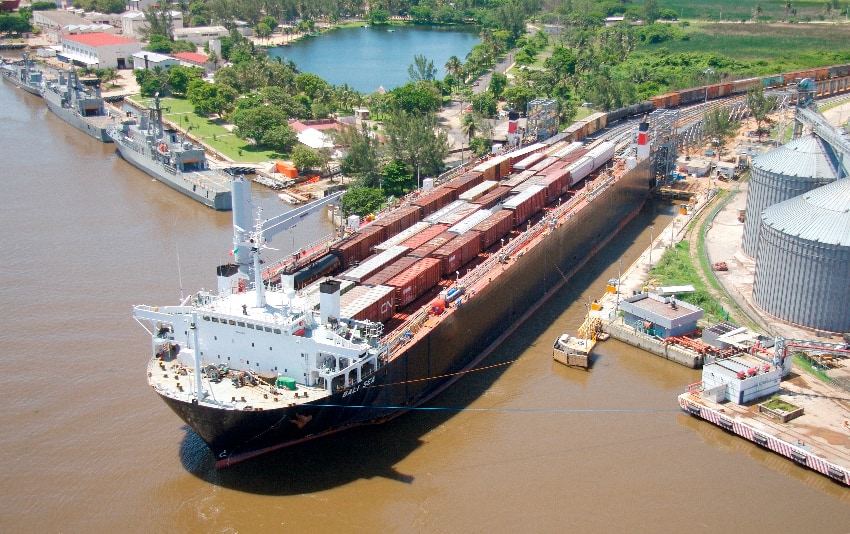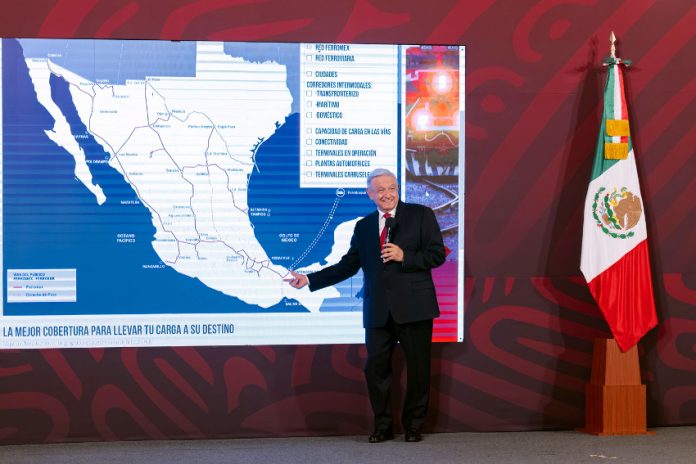To see the Panama Canal up close and in person is truly an impressive sight. The combination of vision, aspiration, hard work, engineering, and ingenuity to turn the canal from a wild idea into reality is awe-inspiring, and it’s undeniable the impact it has had on global trade flows.
So what impact might Mexico’s “alternative” to the Panama Canal, the trans-isthmus trade corridor, have on Mexico and on world trade?
Let’s start with the basics of the project. The interoceanic railway will run from the Pacific Ocean to the Gulf of Mexico for 303 kilometers across Mexico’s narrowest point (the Isthmus of Tehuantepec). The main line of the railway will run between the port cities of Salina Cruz, Oaxaca and Coatzacoalcos, Veracruz. The idea is that a ship would unload its cargo from one side, send it by rail across the Isthmus, and reload it back onto another ship on the other side. This picture helps visualize the process:

What other investments accompany the train?
The trade corridor project also includes passenger and cargo railway lines to other areas, roadways, industrial parks, a gas pipeline and a fiber optic network. The train will include a link to the Maya Train and will include connections to 10 newly created industrial parks along the route which have already attracted US $4.5 billion in potential investments.
Could the project really be a viable alternative to the canal?
Mexican officials have compared the main line across the isthmus to a “cheaper and faster” Panama Canal, noting that it will have the capacity to transport 1.4 million containers annually from port to port on journeys of less than six hours.
For some perspective, the Panama Canal can cost a ship up to US $500,000 and take 8-10 hours to pass through. Nearly 40% of all U.S. container traffic annually passes through the canal so its important to note that even if the interoceanic train is a success, it will make only a small dent in the overall canal traffic.
That being said, the Mexican option would likely be a welcome alternative to shippers as problems with the canal do happen. According to a recent article by CNBC, the Panama Canal currently has a back up of 154 ships and an average wait time of 21 days due to an ongoing drought in the region that is restricting the amount of daily vessel traffic.
What kind of impact could the interoceanic train have on the Mexican economy and development?
Last month, Economy Minister Raquel Buenrostro said the trade corridor project, once operational, could account for as much as 5% of Mexico’s GDP. The project could drive significant growth and investment to a region that has long been neglected by the investment community. This could bring improved standards of living to millions of Mexicans who have had limited economic opportunities in the past and have often had to leave their homeland for other parts of Mexico or other countries to find work.
When will it be ready for use?
What seemed like an implausible idea just a few years ago is rapidly advancing, with the first railway car arriving in Veracruz just last week. The first tests begin next month and the president is insisting the project will be up and running by the time he leaves office in September of next year.
It will be fascinating to watch the progress of this ambitious project and see if it can deliver on the promised benefits to the country and its people.
